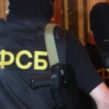
Ingush Jamaat Loses Another Amir
Publication: Eurasia Daily Monitor Volume: 12 Issue: 206
By:

On October 31, government forces killed the leader of the Ingush jamaat, Beslan Makhauri, better known as Amir Muhammad. Makhauri was killed along with another insurgent, named Ilyas Vedzizhev, in the central market of the city of Nazran (Interfax, October 31). One strange thing about the incident was that the Ingush insurgent leader turned up at the city’s central market, where people could have recognized him. Another strange thing was that a woman named Leila Chemurzieva, who brought Makhauri and Vedzizhev to the market, tried to ram through defense lines set up by government forces using her car, meaning the authorities had prepared an ambush for them in advance.
Beslan Makhauri, who was 27 years old, was a native of the village of Barataevka, in the Bolotnitsky district of Novosibirsk oblast. In Chechnya, Makhauri was registered at the address 69 Dyakova Street, in Assinovskaya village. The Ingush rebel leader had been on the Russian government wanted list since 2009. The authorities sought him on charges specified in Articles 317 and 222 of the Russian Criminal Code. Article 317 covers attempts on the life of policemen or military servicemen, while Article 222 covers illegal weapons possession (Kavkazpro.ru, accessed November 11).
Having lived in the Chechen village of Assinovskaya, Makhauri probably joined the Sunzha group of rebels, which carried out attacks in the area of the Chechen-Ingush administrative border. Makhauri appeared on an Internet video for the first time in May 2014. The video shows Makhauri at a meeting of the local Shura (Council) at which the militants pledge allegiance to Aliaskhab Kebekov, who succeeded Doku Umarov, in 2014, as leader of the Caucasus Emirate. In May 2014, security forces killed the leader of the insurgency in Ingushetia, Artur Gatagazhev, in the village of Sagopshi, in the republic’s Malgobek district; Makhauri became his successor. Makhauri next appeares in a video on which he states that he is sending greetings to those who had pledged allegiance to Abu Bakr al-Baghdadi, leader of the so-called Islamic State, and says he is sending an audio address to Umar Shishani. Thus, Makhauri unequivocally suggestes that he and his group would also join the Islamic State (YouTube, February 9).
The last video in which Makhauri appears, shows him sitting next to the amir of Chechen rebels, Khamzat (Khamzat Byutukaev), and pledges allegiance to the Islamic State (YouTube, July 23). In all, the Ingush amir appeared in three videos that included pledges of allegiance to the Islamic State, and it is unclear why this was the case. Makhauri apparently wanted to receive Islamic State approval of his activities, betting on his personal ties to that group’s influential commander Umar Shishani (Tarkhan Batirashvili).
This is not the first time the authorities reported that Beslan Makhauri had been killed. In February 2010, they claimed he was killed in a clash between government forces and rebels near the villages of Dattykh and Arsty, in Ingushetia. However, the Ingush authorities subsequently included Makhauri on the list of wanted insurgents (Kavkazsky Uzel, November 1).
Little is known about Ilyas Vedzizhev, who was killed along with Makhauri, other than that he held the post of amir of the Nazran jamaat. Vedzizhev had not been active for a long time. The role of Leila Chemurzieva, who was wounded when she tried to break through the security forces’ cordons, is also unclear. Chemurzieva’s mother appealed to Ingushetia’s governor, Yunus-Bek Yevkurov, as well as human rights activists to protect the rights of her daughter—who, she said, was accidentally caught in the cross fire and had nothing to do with the insurgents. Chemurzieva is currently in the hospital recovering from the wounds she received during the incident in Nazran’s central market. After Ingush rights activist Magomed Mutsolgov published the appeal from Chermurzieva’s mother on his website (Kavkazsky Uzel, November 1), he ran into trouble himself, with police raiding his office and confiscating all of his computers and documents. The authorities allege he was involved in anti-Russian activities (Mutsolgov.livejournal.com, November 7).
After Makhauri was killed, Russia’s Federal Security Service (FSB) claimed it had found a weapons cache belonging to the Ingush rebel leader. According to the FSB, the cache was hidden in a four-by-eight-meter bunker that was buried four meters underground. The bunker included a lab for making improvised explosive devices (IED) as well as stored about 50 kilograms of explosives and detonators, fuses, microchips and mobile phones, which are used to detonate IEDs. The officials said they found several IEDs that were ready to use, including a so-called suicide bomber’s belt and three buckets with explosives and shrapnel (Kavkazsky Uzel, November 2). Russia’s National Antiterrorist Committee (NAK) claimed the discovery of the bunker made it possible for the government to prevent several other terrorist attacks. If that is the case, it is unlikely that Vedzizhev and Makhauri were the only members of the group, and other members could still carry out attacks.
The death of a jamaat leader in the North Caucasus normally disrupts the operations of the group temporarily. However, leaders of the Ingush jamaat have been killed once or twice a year since 2010, which means the jamaat may be facing a problem of continuity as it struggles to reclaim its role as a full-fledged unit in the North Caucasian armed resistance. The stagnation that the Ingush jamaat has experienced over the past five years is likely to continue.




